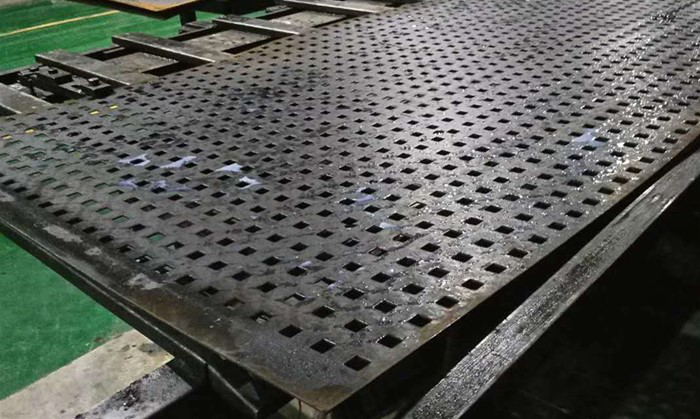Types of Corrosion in Stainless Steel Perforated Sheet and How to Handle Them
Source:www.cn-psp.cnAuthor:河北森驰公司 Last updated:2025-05-16 15:25:33 Browse:
In practical applications, stainless steel perforated sheet is known for its excellent corrosion resistance. However, under certain environmental conditions or due to contamination, it may still develop varying degrees of corrosion. Generally, corrosion issues can be classified into two categories: "mild corrosion" and "severe corrosion." By applying the right cleaning or replacement techniques accordingly, users can maintain the aesthetic and structural integrity of the sheet while extending its service life.
1. Cleaning Methods for Mild Corrosion
Causes of Corrosion
Mild corrosion is usually caused by iron filings, dust, welding spatter, or salt particles in the air adhering to the surface of the stainless steel perforated sheet. These contaminants remain on the surface and do not penetrate the base material, making cleaning relatively easy.
Cleaning Process
Initial Wipe: Use a sponge or soft cloth dampened with neutral detergent or soapy water to gently wipe the affected area.
Rinse Thoroughly: After cleaning, rinse the surface thoroughly with clean water to remove any detergent residue.
Dry Completely: Allow it to air dry or use a soft dry cloth to prevent water spots that may trigger new corrosion.
If light rust spots persist, you may use fine sandpaper (400 grit or higher) or a nylon brush with a mild cleanser to lightly polish the surface until the rust disappears.
2. Treating Severe Corrosion
Causes of Corrosion
Severe corrosion often occurs under harsh environments or prolonged neglect. In such cases, rust not only appears on the surface but may have also penetrated the metal substrate, weakening structural integrity.
Suggested Treatment
Assess the Damage: Inspect the edges of the holes and the load-bearing areas. If there is obvious pitting or cracking around the perforations, the sheet may be close to failure.
Surface Restoration: If the corrosion hasn't fully penetrated, use a polishing machine or specialized grinding tool to remove damaged layers, then apply a stainless steel rust inhibitor to slow down further oxidation.
Timely Replacement: If the damage is widespread or deep enough to compromise structural strength, replacing the stainless steel perforated sheet is strongly recommended to ensure safety and performance.

stainless steel perforated sheet
3. Daily Maintenance and Prevention Tips
To minimize corrosion and prolong the life of your stainless steel perforated sheet, follow these preventative maintenance steps:
Maintain a Clean Environment
Regularly remove dust, welding residue, and other debris from the sheet surface, especially in humid or chemically active environments.
Avoid Harsh Chemicals
Keep the sheet away from strong acids, alkalis, or chlorine-containing cleaning products. If exposure occurs, neutralize with clean water immediately.
Scheduled Maintenance
Conduct a full inspection and light polishing at least once per season. Apply a thin coat of anti-rust agent when necessary to create a protective barrier.
By taking appropriate cleaning, repair, or replacement actions based on corrosion severity—and combining them with regular preventive maintenance—you can significantly enhance the durability and appearance of your stainless steel perforated sheet.
